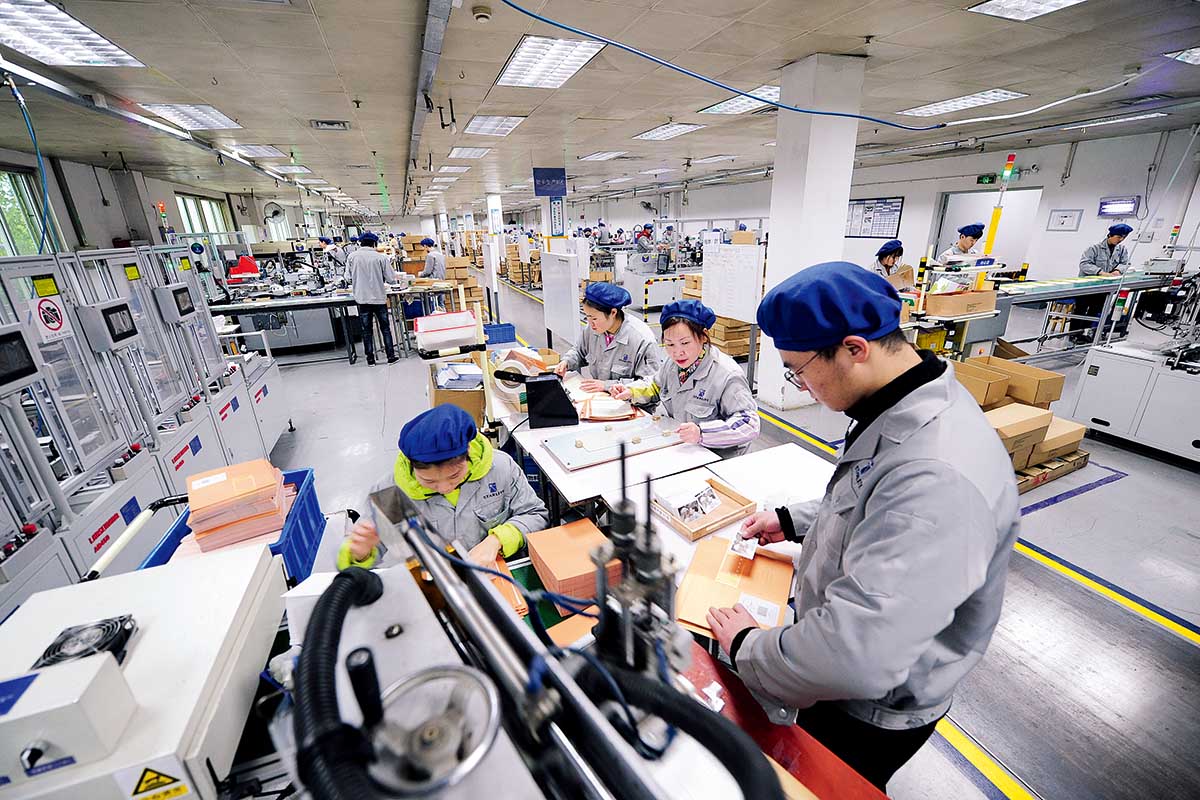Crisis Meets Opportunity: The Next Step for Private Business in China

Over the past decade, Chinese private companies have seen ups and downs. The global financial crisis in 2008 and the private-lending crisis in China in 2011 led to massive shutdowns. The country’s supply-side structural reform, which kicked off in 2016 and lasts to this day, has weeded out many businesses that were using outdated technology, failing to add substantial value and lacking efficient production. Private enterprises that have endured the challenges to remain in operation have demonstrated substantial resilience.
China’s private economy is composed quite differently compared to the past. Existing private companies are largely compliant with the government’s policies on upgrading and improving industrial structure, riding the tide of national development plans such as “Made in China 2025.” Hopefully these companies will continue to embrace government policies for a long time.
Although most private businesses in China are fine-tuned to meet demands for the country’s long-term development and international industrial specialization, it is undeniable that some companies are suffering under increasingly intense market competition resulting from drastic changes in the international market and tightened financial policies at home.
Most major operational problems facing Chinese private enterprises fall into one of the two categories: inability to effectively meet consumer demand in the market or a shortage of capital to sustain production and operations and seize a technological upgrade. The problems usually surface in the form of a debt crisis or a capital chain rupture when they become exacerbated.


How can Chinese private businesses seize new opportunities and kindle another boom amid enormous challenges at home and abroad? The following suggestions could help:
Cope with uncertainties caused by the prolonged China-U.S. trade conflict. China’s private companies should actively adjust and optimize their product mix and, if possible, appropriately cut exports to the United States and prioritize orders from other markets to reduce dependence on the U.S. market and avoid the risk brought by China-U.S. trade conflict.
Control corporate debt. It is common for enterprises to operate with liabilities, but piling debt beyond ability always results in enormous pressure and risk. In this sense, private companies are not encouraged to expand their debt blindly for short-term orders or new projects without a sound evaluation to avoid risk of a capital chain rupture. Instead, the enterprises should operate within their financial capabilities and effectively control debt, so as to be better poised to seize future opportunities when they emerge.
Seek international opportunities. Cross-border acquisition costs have dropped thanks to the gloomy global economic outlook, which presents opportunities for private enterprises from China to acquire quality European and American companies. Advanced products and technology attained through acquisition can help the buyers gain competitiveness in the domestic market and meet demands for new products as domestic consumption upgrades. At the same time, cross-border acquisitions can benefit these companies by providing wider marketing channels to boost sales in overseas markets.
Facilitate a technological upgrade. When corporate resources allow, private enterprises should actively implement technological upgrade and improve their business structure through technological innovation. China’s private companies have been encouraged to upgrade or rebuild operational and organizational processes to gain more competitiveness in domestic and overseas markets.
Adapt to technological waves. As science and technology advance day by day, complete industrial chains transform accordingly. Private enterprises should follow technological progress related to their operations, reserve a pool of talent and technology, precisely identify market demand resulting from the consumption upgrade and provide products and services consistent with the latest trends at the right time.
Seize opportunities from urbanization. China’s demographic structure has been transforming as increasing numbers of rural residents become urban residents. The growing population in cities and towns has certainly led to market expansion and upgrade. The new urban population is embracing drastic changes in living conditions. Traditionally, much of their means of livelihood were self-produced and self-consumed, but now the demand is met by the market. This process is bound to impact China’s economic dynamics profoundly. Private businesses are most intimately aware of the changing demand in urban markets. And private companies will find new growth engines to promote long-term development if they manage to understand the huge underlying opportunities.

In confronting many challenges, Chinese private enterprises have demonstrated far more vigor and cemented more solid bases since the international financial crisis in 2008. The “new generation” of private entrepreneurs, born in the 1970s and 1980s, has now become the major force of business. Most of them are well-educated and armed with modern corporate managerial knowledge. Many studied overseas in the United States or Europe, sharply contrasting the older generation of Chinese private entrepreneurs who thrived with considerably less education. Furthermore, the younger entrepreneurs are the first generation to absorb the impact of new technologies such as the internet so they are more adaptive to new things. Their international vision helps them gain competition advantages.
Facing unfavorable conditions at home and abroad, private businesses in China are encountering difficulties of differing degrees yet great opportunities for development remain. If Chinese private enterprises carefully adapt to changing market demand, actively adjust product mix and manage debt, a bright future awaits.
The author is vice director of the Economic Commission of the Central Committee of the China Association for Promoting Democracy (CAPD), one of China’s non-Communist parties. He also serves as head of the Institute for China’s Industry and Finance Integration Studies and chairman of the Federation of Private Investment Enterprises in Zhejiang.
